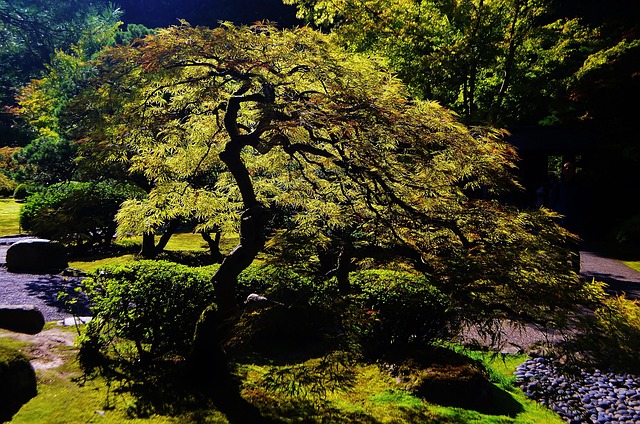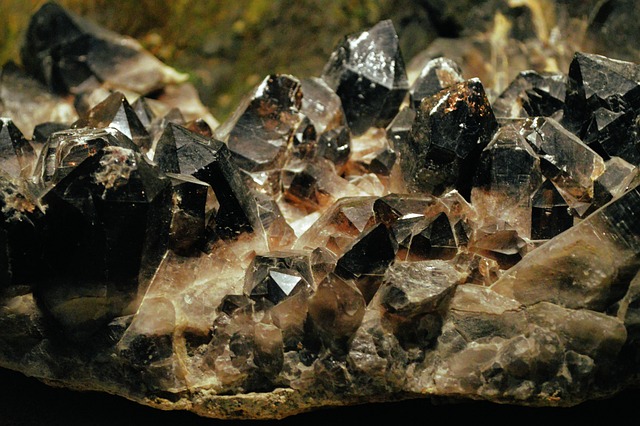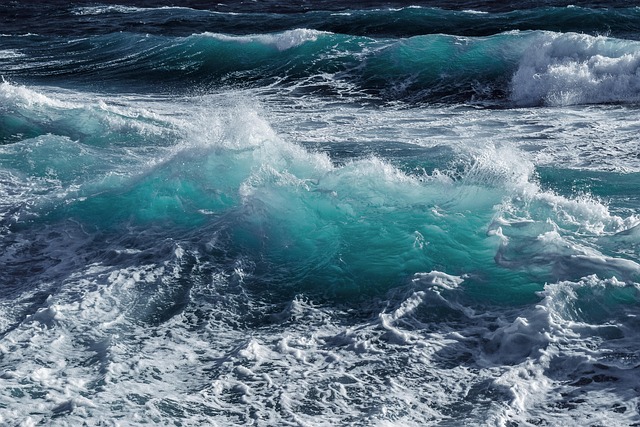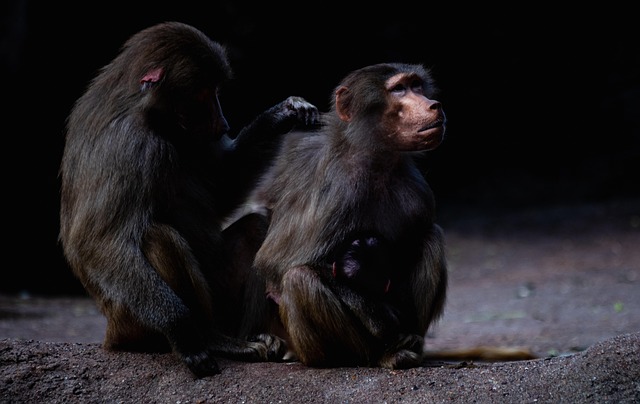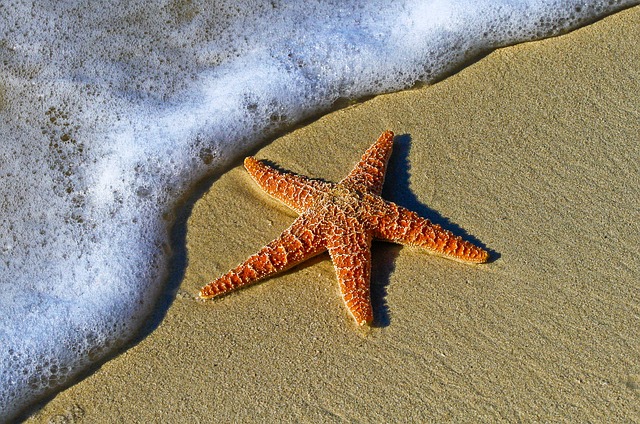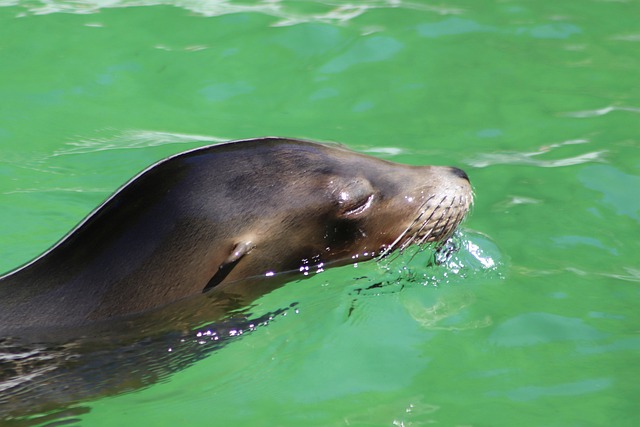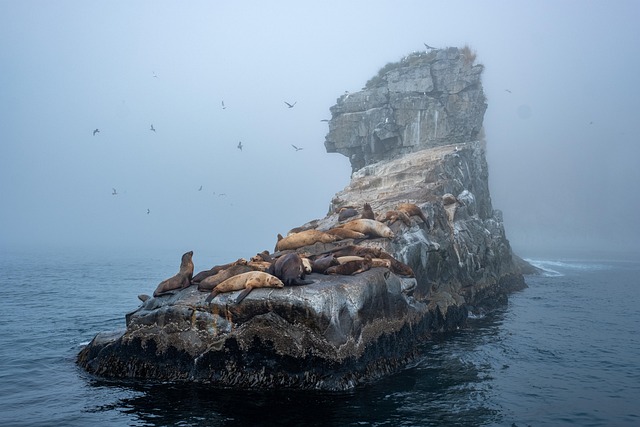Oregon's coastal ecosystem is home to diverse marine life, particularly charming sea lions that use rugged shores for feeding and resting. The state's unique geography provides cold, nutrient-rich waters supporting a rich food chain, ensuring Oregon marine life thrives. Visitors can witness playful sea lion behaviors like diving and chasing in crystal-clear waters. These mammals display distinctive social hierarchies and hunting strategies, with dominant males leading groups and using vocalizations for communication. Popular viewing spots include Yaquina Bay State Park and Cape Perpetua Scenic Area, offering prime opportunities to observe sea lions up close. Responsible observation involves maintaining safe distances and avoiding disruptions to their habitat. Conservation efforts safeguard local sea lion populations and their habitats, ensuring Oregon's rich marine ecosystem for future generations.
Witnessing sea lions in their natural habitat offers a captivating glimpse into Oregon’s rich coastal ecosystems. From exploring the diverse marine life along the state’s rugged shores to understanding the complex social structures of these playful creatures, this article guides you through an immersive experience. Learn about the best viewing spots and ethical considerations for wildlife observation. Discover seasonal migrations of Oregon marine life and explore conservation efforts dedicated to protecting local sea lions.
- Exploring Oregon's Coastal Ecosystems
- Sea Lion Behavior and Social Structures
- Finding the Best Viewing Spots
- Ethical Considerations for Wildlife Observation
- Seasonal Migrations of Oregon Marine Life
- Conservation Efforts Protecting Local Sea Lions
Exploring Oregon's Coastal Ecosystems
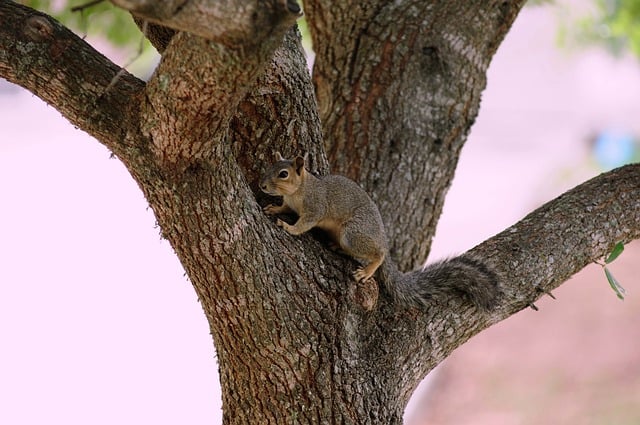
Oregon’s coastal ecosystems are a vibrant and diverse habitat for an array of marine life, including the charming sea lions. These rugged shores serve as both feeding grounds and resting places for these playful creatures. As you explore the craggy cliffs and sandy beaches along the Oregon coast, keep an eye out for the curious seals and sea lions that call this region home.
The state’s unique geography creates a perfect environment for marine mammals, with cold, nutrient-rich waters supporting a rich food chain. Oregon marine life thrives here, offering visitors a chance to witness nature up close. Sea lions, known for their agility and playful behavior, are a highlight for many, as they dive, chase, and rest in the crystal-clear waters, providing an unforgettable sight for those lucky enough to catch a glimpse during their coastal adventure.
Sea Lion Behavior and Social Structures
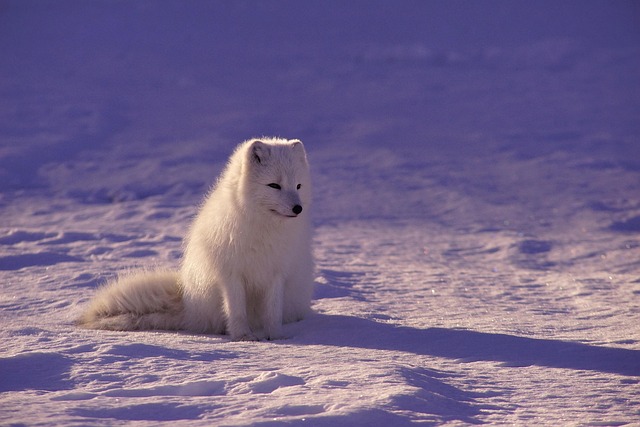
Sea lions, an integral part of Oregon’s marine life, exhibit unique behaviors and social structures that contribute to their thriving in coastal environments. These highly intelligent mammals are known for their playful antics and complex communication systems. In terms of behavior, sea lions often gather in large groups, or rookeries, on rocky shores and islands, providing a captivating sight for observers. During the day, they can be seen lounging on the beach, basking in the sun, while at night, they hunt for fish and crustaceans in the ocean’s depths.
In terms of social structures, sea lions form hierarchical groups with distinct dominance patterns. Adult males are often the most prominent figures, defending their territories and leading the group during hunting expeditions. They communicate through a range of vocalizations, from deep roars to high-pitched calls, each serving different purposes such as claiming territory or coordinating with their pod. This complex social dynamics plays a crucial role in their survival, providing protection, shared parenting responsibilities, and efficient foraging strategies among Oregon’s marine life.
Finding the Best Viewing Spots
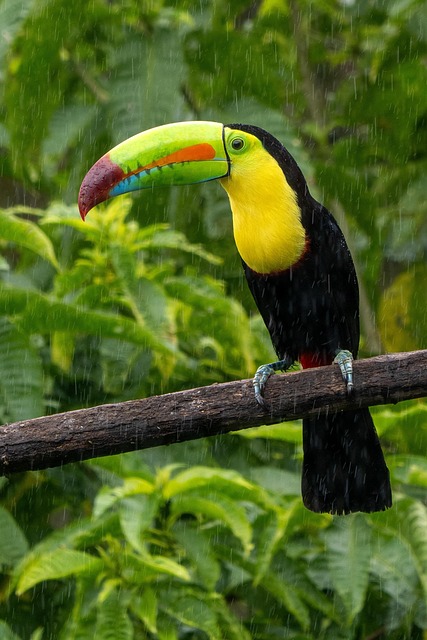
To witness sea lions in their natural habitat, Oregon’s coastline offers some of the best viewing spots for marine life enthusiasts. The state is home to several colonies of California sea lions and Steller sea lions, making it an ideal destination for observing these magnificent creatures up close. Some popular locations include Yaquina Bay State Park and Cape Perpetua Scenic Area, where visitors can witness the playful antics of sea lions resting on docks or floating in the water.
For optimal viewing experiences, consider visiting during sunrise or sunset when the lighting is soft and the animals are most active. Additionally, staying on designated trails and maintaining a safe distance from the sea lions ensures minimal disturbance to their natural behavior. Oregon’s marine life enthusiasts will find these spots not only offer incredible photo opportunities but also provide a chance to appreciate the beauty and diversity of coastal ecosystems.
Ethical Considerations for Wildlife Observation
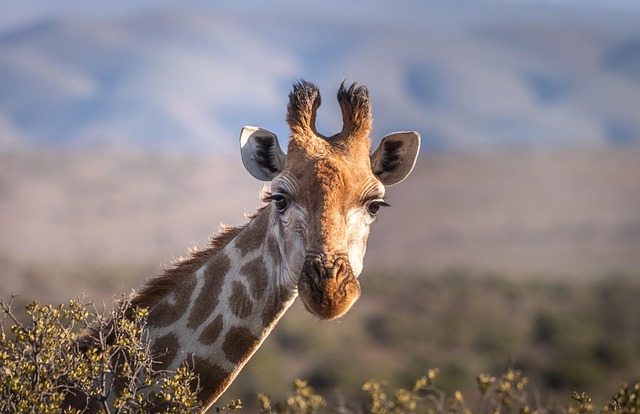
When observing sea lions in their natural habitat, such as along the coastlines of Oregon marine life, it’s crucial to balance the excitement with ethical considerations. Respecting wildlife and their environment is paramount. One key aspect is maintaining a safe distance. Sea lions, like all wild animals, have needs for space and solitude. Getting too close can cause stress, disrupt their natural behaviors, and even endanger both the animal and the observer.
Additionally, ensuring minimal disruption to their habitat is essential. The coastal areas where sea lions gather are often delicate ecosystems. Human interaction should be mindful of preserving the integrity of these habitats. This includes avoiding loud noises or sudden movements that might startle them. Responsible wildlife observation involves being a silent, observant guest in their realm, allowing for a true appreciation of Oregon’s marine life without causing harm or disturbing these magnificent creatures in their own territory.
Seasonal Migrations of Oregon Marine Life
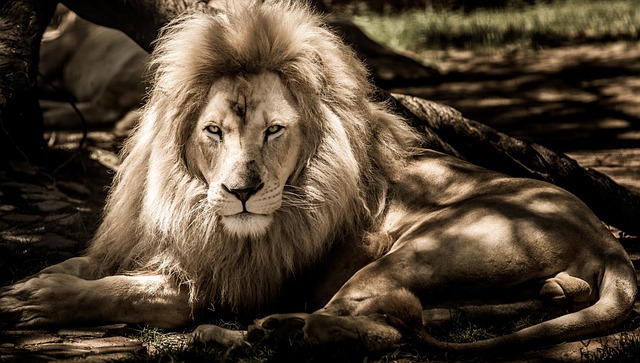
Oregon’s coastline is a vibrant tapestry where marine life thrives, and one of the most captivating sights is the seasonal migration of sea lions. These majestic creatures embark on lengthy journeys, navigating the vast Pacific Ocean to reach their preferred breeding and feeding grounds. During the warmer months, Oregon marine life, including sea lions, flourishes in the rich coastal waters, attracting visitors from around the globe.
The migrations often follow a well-established pattern, with sea lions traveling hundreds of miles between their summer haunts near rivers and estuaries, where they feed on abundant fish populations, and winter resting grounds further offshore. This dynamic behavior is not only a fascinating spectacle for nature enthusiasts but also underscores the intricate relationship between marine ecosystems and the creatures that call them home.
Conservation Efforts Protecting Local Sea Lions
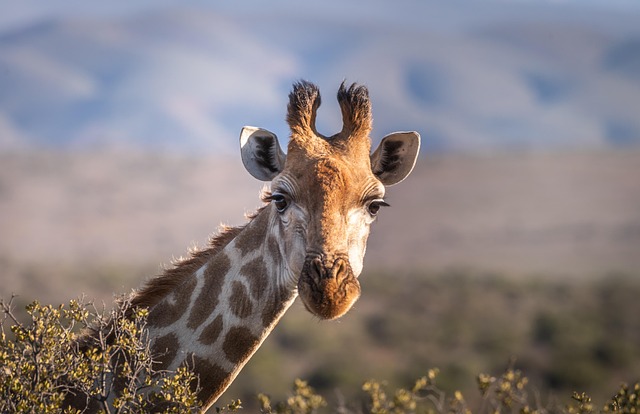
In Oregon, conservation efforts have been crucial in protecting local sea lion populations and their habitats. Organizations and volunteers work tirelessly to monitor and prevent human disturbances, ensuring these marine mammals can thrive in their natural environment. The coast of Oregon is home to diverse marine life, including sea lions, who rely on pristine beaches and robust food sources. By implementing strict guidelines for coastal development and promoting eco-tourism practices, conservationists aim to maintain the delicate balance between human activities and the preservation of Oregon’s unique marine ecosystem.
These efforts focus on educating the public about sea lion behavior and the importance of respecting their space. Local communities have embraced sustainable practices, such as proper waste management and noise reduction, to minimize disruptions to sea lions and other coastal residents. Through these collaborative actions, Oregon continues to emerge as a leader in marine life conservation, ensuring that future generations can witness and appreciate the majestic sea lions in their natural habitat.






